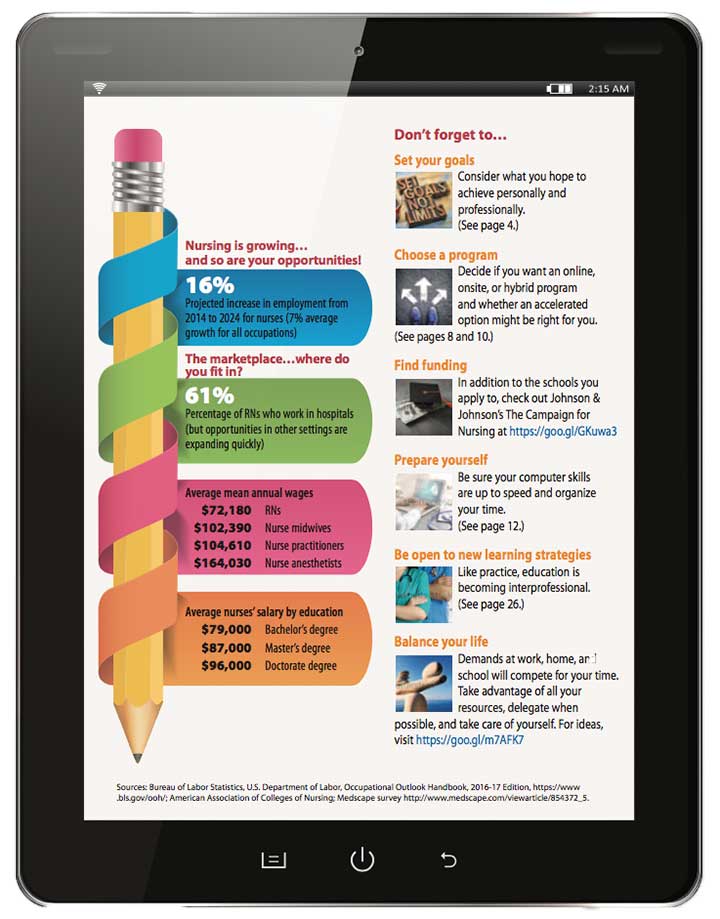As a nursing professor who has worked in long-term care (LTC), I’ve found it to be a rich and valuable learning environment where students can gain assessment skills, get firsthand experience with complex health problems, and learn to work as interdisciplinary team members. I’m aware, of course, that many nurses look down on LTC, some nursing students lack enthusiasm about caring for LTC patients, and some faculty members view LTC as an unpleasant environment that’s not clinically challenging enough for students.
During my first year on the nursing faculty, I could choose one of two clinical placement options for my students; I chose a nursing home with a subacute unit where many residents had complex medical problems. I have cared for elderly residents in LTC settings for 8 years and feel comfortable in that environment. I can relate to the nurses there and understand the challenges of their job.
Like other healthcare settings, LTC poses unique challenges. I believe students benefit from the opportunity to gain varied clinical experiences whenever possible—and that clinical nurse faculty should foster students’ enthusiasm about all learning environments. To function effectively in LTC, nursing educators must be knowledgeable about this environment and the residents’ care needs.
Initially, my students expressed concerns about doing a clinical rotation in a nursing home instead of a hospital. They feared they’d be bored. One student said, “This is ridiculous! How can I learn anything there? This is my last semester and I’m supposed to spend the next 10 to 12 weeks working in a nursing home?!” Although the other students didn’t express such concerns, I sensed some of them agreed with their classmate. I responded, “Keep an open mind. You may be surprised by how much you’ll learn before the semester ends.”
Preliminary site visit
Before my students’ first clinical day in an LTC facility, I typically meet with the facility’s nurse educator, charge nurse or nurse manager, and director of nursing to discuss goals for the learning experience and to review expectations and boundaries. This helps ensure all parties are on the same page. In particular, I make sure to clarify students’ roles; they shouldn’t be expected to function as employees during their rotation.
Preparing students
To prepare students for their weekly clinical experience in the nursing home, I have them complete online education modules providing the latest evidence-based practice guidelines on common problems in nursing home residents (such as dementia, falls, and end-of-life problems). They use assessment tools from the Assessment Tools: Try This:® and How to Try This resources for geriatric nursing from the Hartford Institute for Geriatric Nursing. (See Faculty teaching resources.)
During the LTC clinical rotation, I assign reading and videos specific to that week’s learning objectives. At the postconference, I ask students to discuss similarities and differences between the hospital and LTC settings, based on their observations.
Orientation
To help students understand what’s expected of them, they undergo the same orientation on the first day and watch the same educational videos as new hires do. Also, they tour the unit to meet some of the residents and staff and to review charts, documentation, and assessment forms. If the charge nurse and staff permit, I have the students follow nurses and nursing assistants for an hour or two for observation only.
Gaining assessment and documentation skills
The LTC setting can be especially conducive for students to practice their assessment skills and to learn to work with other healthcare team members. Dementia care, fall prevention, urinary incontinence, pressure ulcers, and enteral tube feedings are common clinical issues in LTC.
The LTC clinical rotation has been an excellent learning opportunity for my students to implement evidence-based practice in the care of elderly patients. They have completed fall risk and pressure ulcer risk assessments using the facility’s evidence-based tools and have
participated in planning, implementing, and documenting the plan of care with minimal supervision.
Acquiring MDS experience
In certified nursing facilities, Minimum Data Set (MDS) assessment forms must be completed for all residents. Usually, this is the responsibility of the MDS nurse. My students meet with the MDS nurse to understand how assessments, care plans, and other documentation forms come together to complete the residents’ MDS record. They use the MDS form to complete the assessment of an assigned resident, which gives them valuable experience completing full assessments using the MDS forms.
Working as interdisciplinary team members
Working as part of the interdisciplinary team and providing patient-centered care are essential competencies for nursing students to acquire. The LTC setting gives them an opportunity to obtain these competencies. Students need to learn about all the key healthcare professions and understand how they work together to provide care for LTC residents. My students work with physical therapists, social workers, speech therapists, admissions directors, and even the facility’s ombudsman. Their “day in the life” of other professionals teaches them what it’s like to walk in those individuals’ shoes, giving them a new perspective.
To promote patient- and family-centered care, students also join in family meetings, if the resident and family permit. In addition, they participate in discharge planning and education related to postdischarge care. Family meetings are useful forums where students and others share the resident’s care information, learn about the resident’s and family’s concerns, and provide emotional support.
Students’ comments
Three weeks into their clinical rotation, two of my students stated during postconference that the LTC rotation was the best clinical experience they’d ever had. Initially, they’d feared they wouldn’t learn anything, but it turned out they learned a great deal in a short time. One student said, “Residents come in with all these wounds. Some places don’t allow students to touch them, but not here. I now feel comfortable cleaning, assessing, and dressing wounds and seeing the improvement over time. Overall, this has been a great experience.”
Keys to success
Working closely with the clinical nurse educator in the LTC facility has proved crucial to my students’ clinical experience. The nurse educator receives biweekly outlines of students’ goals and works with faculty to ensure students have access to residents who meet their learning outcome for the week. Staff nurses’ positives attitudes and behavior also have contributed to our success. Staff have been accommodating to students’ needs and don’t seem to view their presence as an added source of stress. I’ve also found that giving LTC staff and faculty members a copy of the students’ learning outcomes and keeping communication channels open helps ensure everyone is on the same page during this rotation.
Framing LTC as a rich learning environment
In LTC settings, the registered nurse shortage is especially pronounced. As nursing educators, we should encourage students to regard this setting as both a rich learning environment and a possible future employment site. Instead of presenting LTC as a last resort for employment, we should encourage students to experience it for themselves.
Selected references
Assessment Tools: Try This:® tools and resources for achieving the best practices in the care of older adults. 2015. Hartford Institute for Geriatric Resources. www.hartfordign.org/practice/try_this/
Brynildsen G, Bjørk IT, Berntsen K, Hestetun M. Improving the quality of nursing students’ clinical placements in nursing homes: an evaluation study. Nurse Educ Pract. 2014;
14(6):722-8.
Mueller C, Goering M, Talley K, Zaccagnini M. Taking on the challenge of clinical teaching in nursing homes. J Gerontol Nurs. 2011; 37(4):32-8.
Kechi Iheduru-Anderson is an associate professor of nursing at Quincy College in Quincy, Massachusetts.



















1 Comment.
Thank you, Dr. Iheduru-Anderson, for this article and your insight! Any suggestions, or evidence-based tools, for evaluating nursing student performance in LTC?